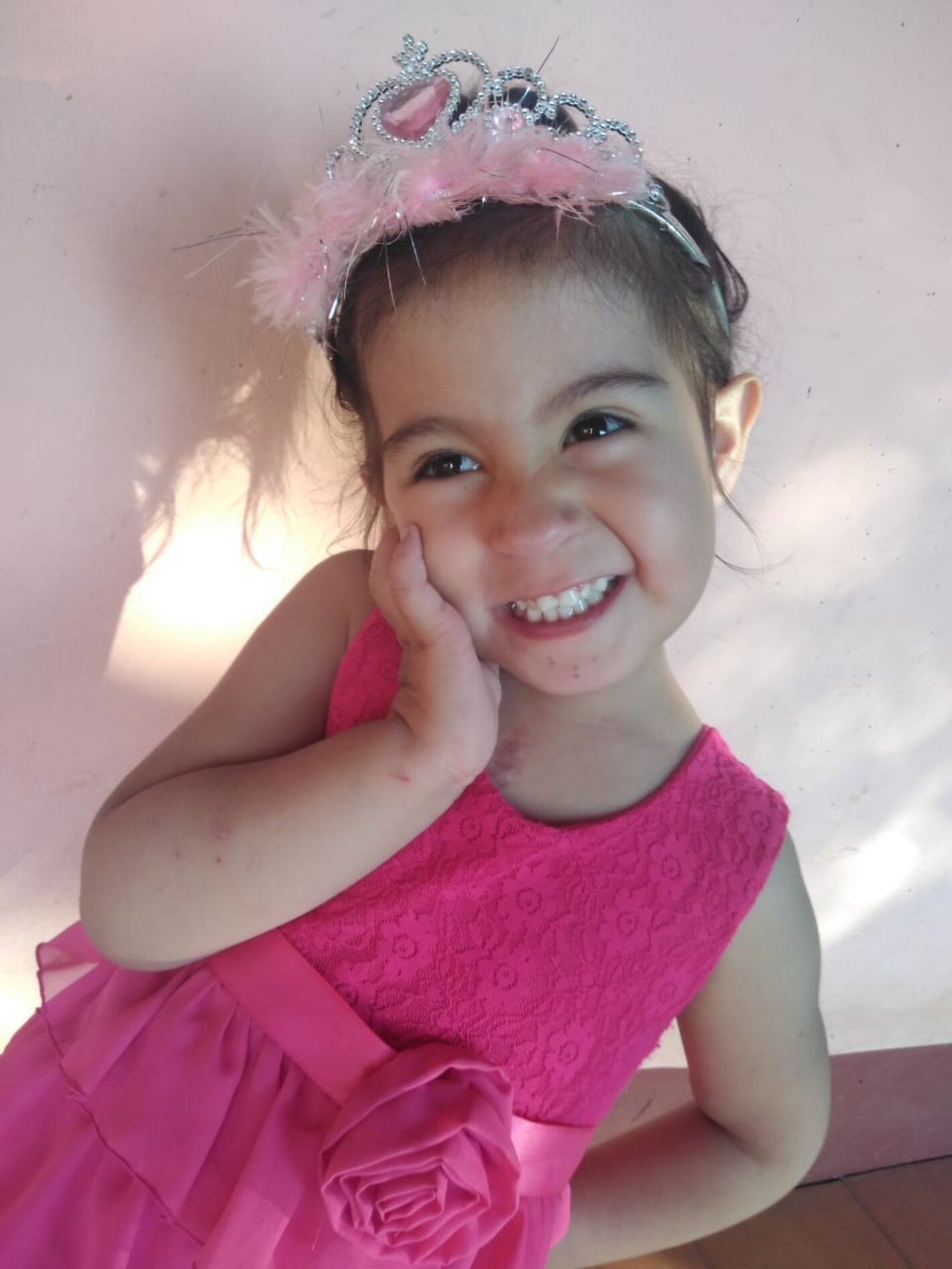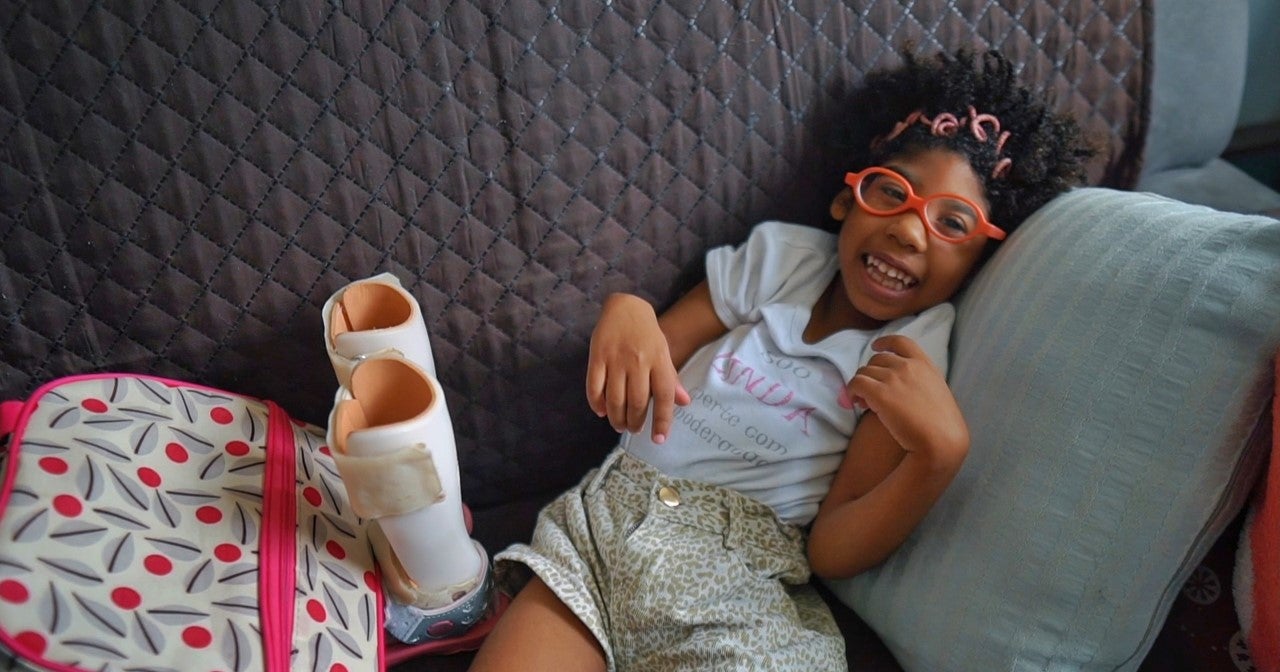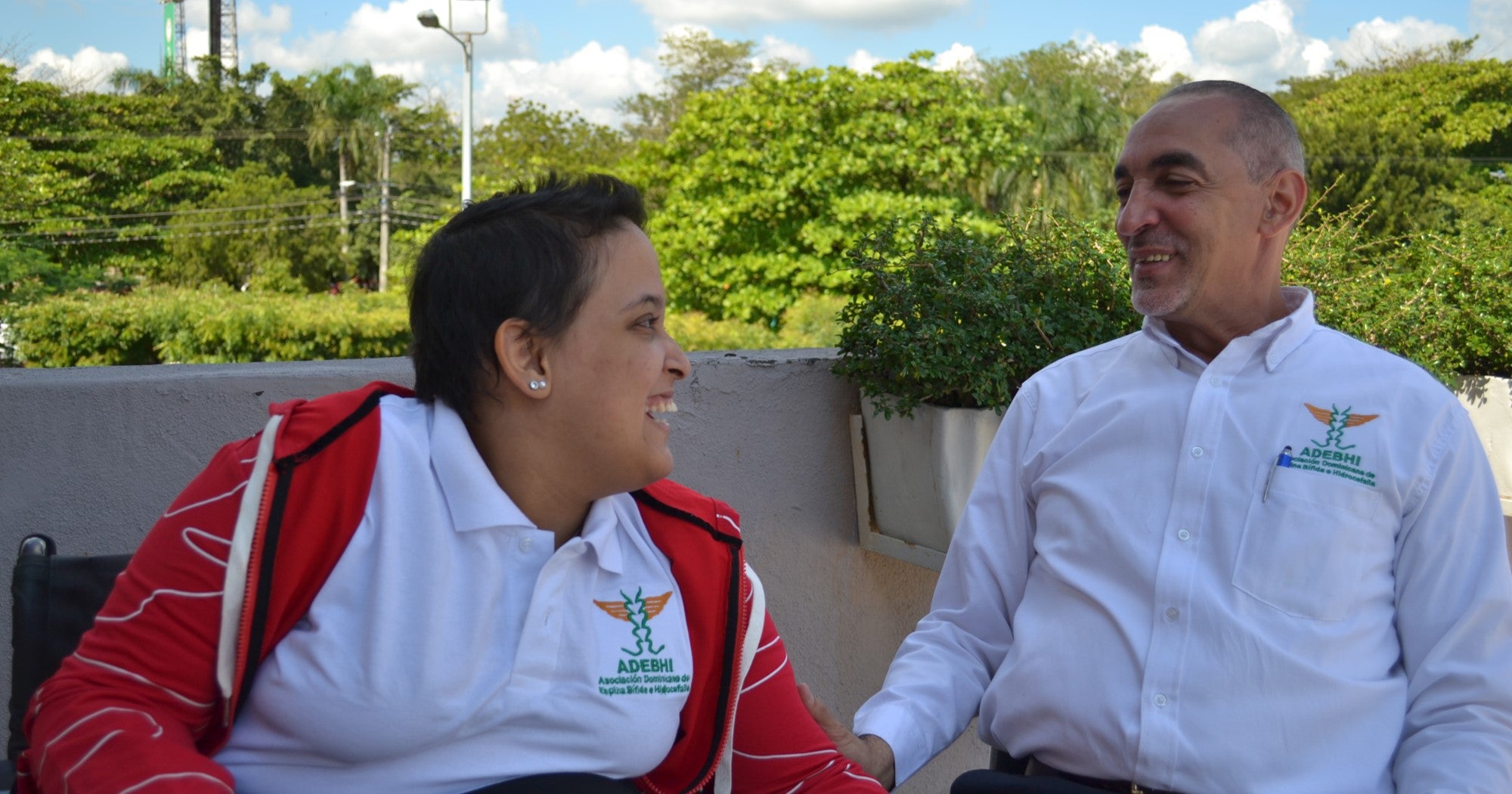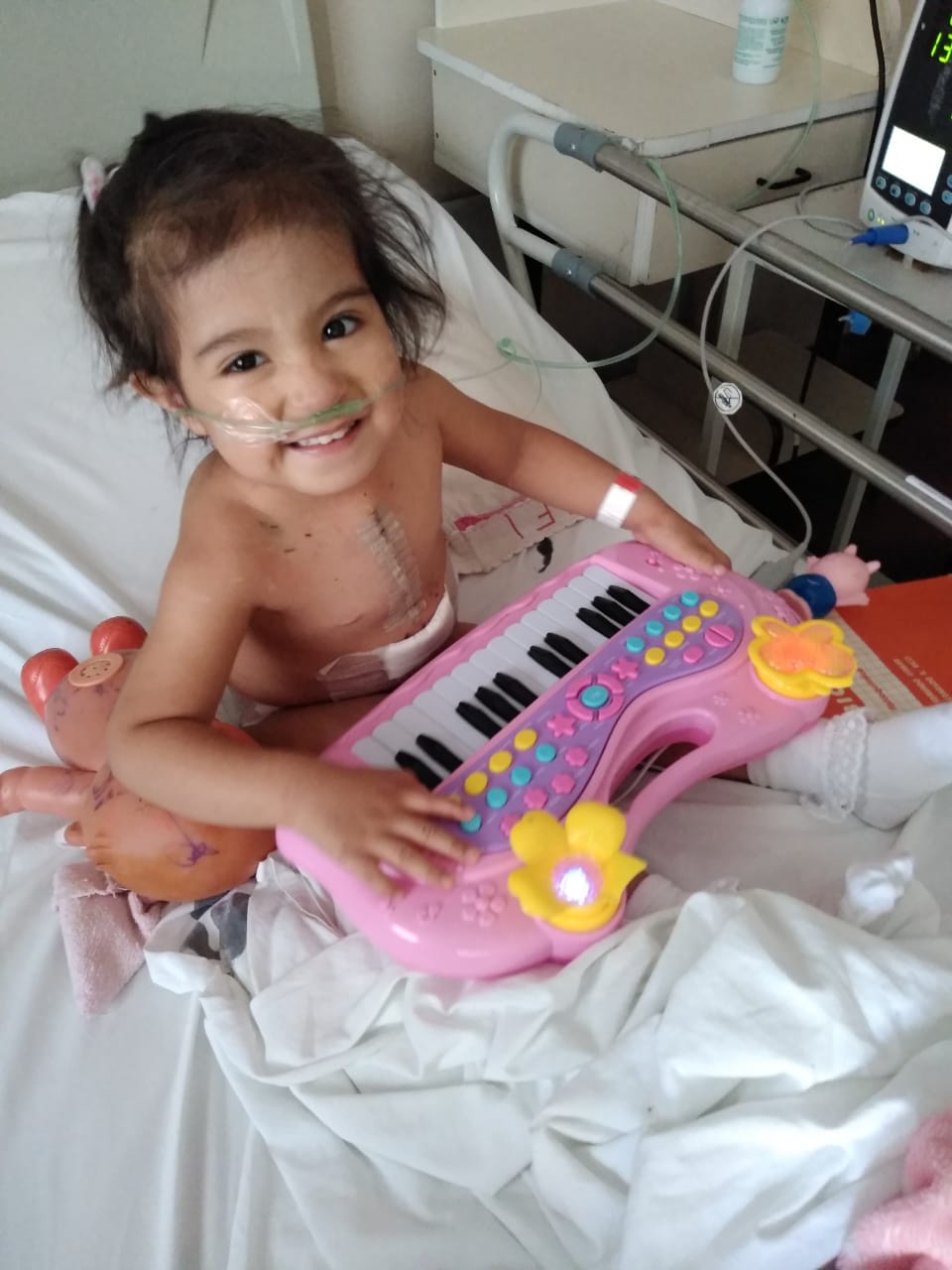
Montevideo, Uruguay, 2 March 2020 (CLAP-PAHO) - Every year, around 8 million newborns are born worldwide with a severe congenital defect, and about 3 million will die before the age of 5 years. In Latin America, birth defects account for up to 21% of the deaths of children under 5 years and one out of five babies dies from birth defects during the first 28 days of life.
Birth defects are either structural or functional abnormalities that occur during pregnancy. Their origin may be genetic, infectious, environmental or nutritional, although in many cases their cause remains unidentifiable. The most common and serious congenital disorders are congenital heart defects, neural tube defects, and chromosomal abnormalities such as Down syndrome. In 2016, the Congenital Zika Syndrome (CZS) was added to this list.
“Many birth defects can be prevented and the quality of life of the children with those defects can be improved through accessible and in many cases low-cost interventions. Prevention is achieved through measures including but not limited to immunizations, improvements in food and nutrition, avoidance of the consumption of toxics, elimination of environmental factors and prevention of diseases such as maternal diabetes”. notes Pablo Durán, regional advisor on perinatal health of the Latin American Center for Perinatology, Women's Health and Reproductive Health (CLAP) of the Pan American Health Organization (PAHO/WHO).
However, to ensure a better quality of life for this population, “countries need to produce data gauging the magnitude of the situation, promote surveillance, implement specific programs and interventions, provide appropriate are and services and promote the active participation of families and civil society”, Duran adds.
A decade ago, WHO adopted a resolution at the 63rd World Health Assembly calling on countries to prevent birth defects whenever possible, promoting the implementation of screening programmes and providing support and ongoing care to both children with birth defects and their families.
The resolution also emphasized the well-being of persons born with this condition, renewing the call to action made in 2017 under the framework of the International Conference on Birth Defects and Disabilities in the Developing World (ICBD).
This 2017 international consensus proposes, among other things, “to establish a holistic, multidisciplinary and multisectoral approach that adequately meets the health, educational, occupational, rehabilitation and social needs of people with birth defects and disabilities throughout the course of their lifetime...”. A perspective associated with ensuring timely treatment, including surgery, medications, nutrition, and universal coverage. In the statement, these demands are added to the importance of engaging governments in supporting primary prevention and ensuring integrated civil society programmes to promote public awareness.
It is in this scenario that PAHO/WHO encourages the countries in the region to promote policies aimed at enhancing the quality of life of people with birth defects and supporting their families.
Zika five years later
Children diagnosed with Congenital Zika Syndrome (CZS) are the main players in the setting of the onset, care and monitoring of this new disease that first appeared in 2015.
The first cases occurred in the northeast of Brazil, the country with the highest number of cases in the global CZS epidemic. Coinciding with the epidemic of Zika virus infection, there was also an abnormal increase in the number of cases of microcephaly in Brazil, with its peak between October and November 2015.
The same public health problem affected 22 countries. These cases evidenced by microcephaly and complex neurological problems were subsequently better characterized as the CZS. On 1 February 2016, WHO declared Zika a public health emergency of international concern.
PAHO's latest epidemiological report states that there are 2,952 confirmed cases of congenital Zika syndrome in Brazil.
Federal government and the states intervened and invested in the training of physical therapists and in the assistance of social workers, as expressed by Erica Nera, the coordinator of the specialized Rehabilitation Center of the Altino Ventura Foundation, reference center for these patients in Pernambuco. Moreover, the network of specialized rehabilitation centres, which concentrate the largest supply of services for children with CZS and their families, was also expanded.
At the Altino Ventura Foundation the rehabilitation team consists of a range of professionals, including, but not limited to occupational therapists, physical therapists, speech therapists, psychologists, social workers, pedagogues and orthopedists. “An interdisciplinary team is supported at all times in the discussion of cases, the development of protocols and the re-evaluation of CZS patients. Physical therapy stimulation aims to reduce spasticity, one of the main neurological manifestations of children with CZS,” remarks Nera.
Children with CZS remain significantly impaired in the various areas of interaction, visual stimulation and learning, but, albeit slowly, they have made progress. Tantiane Freitas, one of the occupational therapists at the Altino Ventura Foundation, believes that it is important to promote the process of inclusion of these children in the educational system, “… it will not be easy, it is a challenge, just as the initial arrival of these children was a challenge for us. School will have to get ready to give these children all the specialized support they need.”
“Time went by and we began to adapt to Grazi's life”
- Inabela Tavares, Grazi’s Mother
Grazi was one of the first babies born in Recife with Congenital Zika Syndrome. “At first the doctors had no clue. My husband became depressed because this was his first child. He had always dreamed of a perfect child, who would be able to walk, to speak. We were disheartened; we didn´t know what to do. At first, everything was challenging: the girl was wasted; she had loss of sight and a hearing hypersensitivity. Any noise would make her scream; she would frighten and had spasms. Grazi is now four years old. Time passed and we began to adapt to her life, to the way she was born, how she came to us, what she was like, what she was able to do and what not... And this love for Grazi and this huge struggle began. My husband is 100% for Grazi today.”
Neural tube malformations, among the most common
Spina bifida is one of the most common birth defects of all those related with the closure of the neural tube, i.e., those in which the spine fails to complete its development. Newborns with this condition require corrective surgery, and depending on the severity, they may have varying degrees of sequelae
In the Dominican Republic, PAHO/WHO has implemented a number of interventions aimed at improving prenatal health. Timely diagnosis, as well as proper follow-up of newborns with congenital malformations and metabolic disorders, poses an important challenge for the country. In conjunction with the Ministry of Health, the Organization has developed care protocols to strengthen the service that will be provided once the National Neonatal Screening program becomes operational. Similarly, PAHO/WHO has developed initiatives aimed at improving the rehabilitation and social integration of people with disabilities. These include the evaluation of rehabilitation services at different levels, the system of continuous assessment and certification of disability and independent life workshops with a view to provide tools that can facilitate the social participation of people with disabilities.
Although there are no official records in the country with statistics on neural tube defects, many families offer living testimony on this condition. Such is the case of Luciano Moreta, father of Karidad, who was born with spina bifida and hydrocephalus. This prompted him to partner with other parents experiencing the same situation, so as to coordinate joint actions to overcome the challenges associated with this condition (see box).
“As parents we partnered for the health and well-being of our children”
- Luciano Moreta, leader of the Dominican Association of Spina Bifida and Hydrocephalus (ADEBHI, for its acronym in Spanish) and father of Karidad
“The first time I heard about spina bifida was when my second daughter was diagnosed the condition, when my wife was on the sixth month of pregnancy. We felt lost: we didn't know what would happen to our baby and our family. Because she was born with Myelomeningocele, Karidad had to undergo surgery within 24 hours of her birth to close the cyst on her back and prevent infections. A week later she was operated again for the placement of a valve because of her hydrocephalus. She stayed at the hospital for about 20 days, and after that we had to take her weekly for the care of the wounds. Today Karidad is 24 years old.
During the many days I stayed in the health center where my daughter was admitted, I met other parents who were going through the same: their children had been diagnosed with spina bifida and some of them also had hydrocephalus. Gradually we created a network, and today - 24 years later - we have the Dominican Association of Spina Bifida and Hydrocephalus (ADEBHI). As an association we support each other to fight for the well-being of our children. We face major challenges, such as the high cost of the condition, not having a specialized institution to guide us in the process and having to deal with constant medical interventions and therapies that often exceed health insurance coverage. It's a long way, but every day the other parents and I take strength for our sons and daughters, because we want the best for them. We want them to live in a society that understands their condition, that allows them to integrate and where they can develop their capacities to the fullest, without any limitations.”
Half of congenital heart diseases need surgery in the first year
Congenital heart disease is caused by developmental abnormalities that affect the cardiac structures; it may encompass a range of problems that affect that organ and is the most common congenital abnormality. These defects are already present at birth but may be discovered later in life. According to WHO data, one in 33 infants worldwide has congenital heart disease.
In Argentina “from 6,000 to 7,000 children are born with this condition every year. About 50 percent of them will require surgery in the first year of life and two-thirds are satisfactorily treated with a timely diagnosis,” according to data handled by Dr. Eugenia Olivetti, pediatrician specialist at the Department of Cardiology of the Garrahan Hospital and coordinator of the Congenital Heart Disease Coordinating Center.
It is in this context that the Ministry of Health of Argentina created the National Congenital Heart Disease Programme (PNCC) in 2008 and, since 2010, this programme funds all the (surgical or hemodynamic) interventions and diagnostic tests of children and adolescents up to 19 years with congenital heart malformations through the SUMMAR Program.
The PNCC is responsible for coordinating, referring, treating and following the cases of children exclusively covered through the public health system with the aim of improving prenatal and postnatal diagnosis of congenital heart disease, achieving correct stabilization of the patients with heart disease at their place of birth, conducting a timely and safe referral to reference centres and implementing their post-surgical follow-up.
This combination led to the creation of the First Federal Public High Complexity Network, which includes public hospitals throughout the country previously evaluated by the Ministry of Health of Argentina (42 reference centers and 14 treating centers).
Each province in Argentine and the Autonomous City of Buenos Aires have designated reference hospitals responsible for confirming the patients’ diagnosis and reporting it to the National Coordinating Center, who will assign the case to a Cardiovascular Center authorized for treatment. This synchronization allows for timely care.
“One of the difficulties we faced before the creation of this program was that the surgery waiting list for children without private health coverage or medical insurance schemes was one year. Today this was reduced to one day,” Olivetti said. One decade into this joint work of the PNCC and the SUMAR Programme, more than 15,000 (surgical or hemodynamic) interventions have been performed to children in the public system, and 40,000 children have been registered with this condition. One such case is that of Sofia, who is now 4 years old (see box).
“We must protect her from the weather because any cold can end up in a hospitalisation”
- Agustina Balbuena, Sofia's mother
“I had Sofia when I had just turned 15. Now I'm 18 and she's 4. We live in Santo Tome, in Corrientes, with my mother and aunt, both retired. When I was in my 28 weeks of pregnancy, I went to get an ultrasound and was told that Sofia had congenital heart disease and that we had to go to Buenos Aires so she could be operated upon birth. I still remember that day, as if they had thrown a bucket of cold water at me. My mother had gone with me and we were desperate when we left the clinic. First, we went to Posadas (Missions) to complete the diagnosis. As my mother has family in Buenos Aires, we managed to go to the capital. That's when I learned of the Garrahan Hospital. I had an ultrasound: Sofia had right ventricle hypoplasia. She underwent her first surgery when she was 11 days old. Her condition requires four interventions. I was very happy with how we were treated at the hospital; I was very young; I was alone with my mother and the staff made us feel safe. They treated Sofia with a lot of love. For the time being, according to what they explained to us, the therapeutic plan is over. Sofia is fine, normal, although she has some limitations and she may eventually need a transplant; nobody can tell. Now we must see to it that she eats with little salt and that she does not catch any colds; we must protect her from any weather changes because the slightest cold can end up in a hospitalization. She's about to start kinder school, and I'm finishing high school. Now we're good.”






